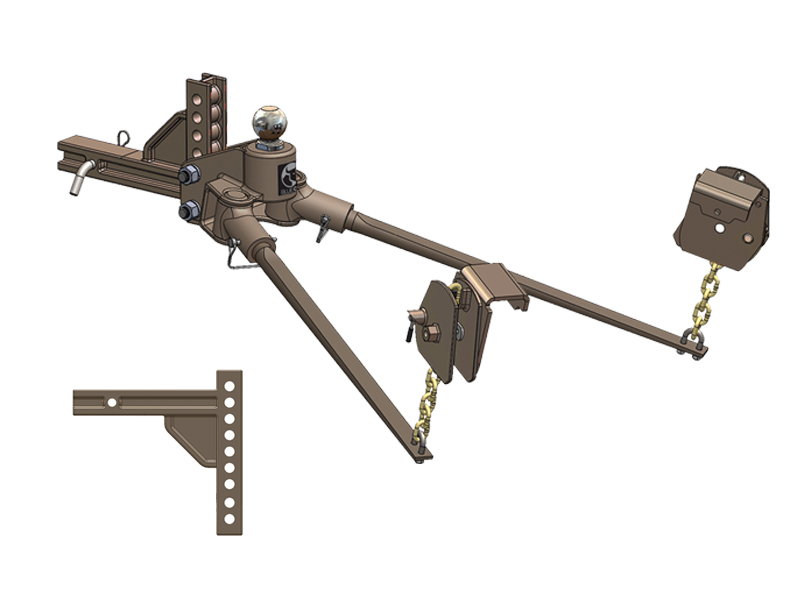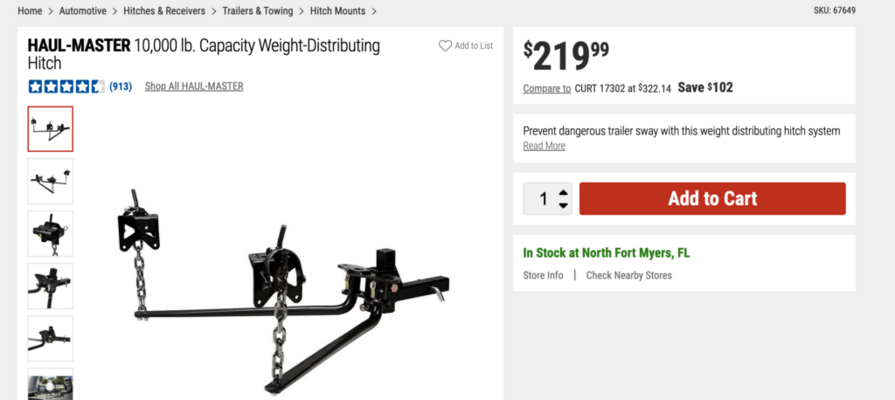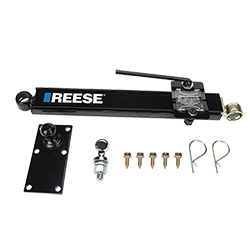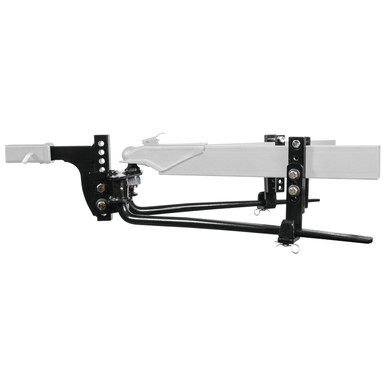The rise or drop is not in the hitch, but rather the shank the hitch is attached to. The Blue Ox is a very good hitch and is lightweight compared to other hitches. In addition it has shorter, lighter spring bars than many, and there is very little setup to it. If you are any good with tools, you can do the installation and if you don't have torque wrenches, find a truck or diesel shop to do the torquing of the ball )450 lb/ft and the two cross bolts that hold the head to the shank (260 lb/ft)
Do you have the trailer loaded correctly? Trailer sway, especially in a small trailer is largely caused by loading too much stuff aft. You need a tongue weight that is 10% to 15% of total trailer weight. Looking online, it appears the trailer has a GROSS WEIGHT of 3850 lb so expect a tongue weight of 500 lbs. If less than that, you could be creating the sway. Load the trailer forward and take it on a test drive.
This is the 550 lb tongue weight model with a nine hole shank (they also have an 11 hole shank)
The shank is the bar in the lower left.
You can many times find these used where someone upgraded trailers and ended up with the hitch. I bought my nearly new 1000 lb model on Craigslist for $300.
Amazon has the
550 lb Sway Pro with the seven hole shank for $658
Blue Ox web page with description for this particular hitch
7 hole shank combination
9 hole hank combination and
11 hole shank combination
Cheap hitches tend to be all or mostly weight distributing and little or no sway control. You can get a cheaper hitch and add a anti sway damper to it.
OK, editing somewhat, if your receiver is at 14 inches (middle of the 2 inch square opening?) you need ten inches to the top of the ball?, bottom of the coupler? not sure here.
Receiver 14 off the ground, measured with the trailer hitched to account for sag? Just trying to get the picture here. All you need is the right shank. As you can see from the pic, the Blue Ox hitch head puts the ball well up above the two bolts that attach the head to the shank.
Just measured. If I were to move the hitch head to the very top holes of a 7 hole shank, turned up, I can get the TOP OF THE BALL 12 inches above the CENTER of the receiver.
Shanks are standard hole spacing and size. Almost any shank will work on almost any head. The holes are 3/4 and spaced 1¼ apart center to center.
Charles




